The British Crown Jewels have a long, complicated, and at points, confusing history. Indeed, despite the claim that the coronation crown (St. Edward’s Crown) was destroyed during the English Republic (or Commonwealth) in the mid-seventeenth century, there is little evidence to substantiate that the crown originally belonged to St. Edward the Confessor, the last Anglo-Saxon king of England, or that it had even existed for more than a couple of centuries. The first reference to “St. Edward’s Crown” was recorded in 1220 at the second coronation of Henry III. William the Conqueror wore a crown suggested to have been the same that Edward the Confessor wore. However, the Anglo-Saxon Chronicle, while noting that William wore a crown at least three times a year to illustrate and reinforced his kingliness, gives no indication that the crown had belonged to his predecessor. Perhaps, and this is my own conjecture, those who continued the Anglo-Saxon Chronicle may have actively sought to disassociate St. Edward’s Crown with William with the desire not to add legitimacy to his reign.
While this is not conclusive, depictions of the crown worn by both Edward the Confessor and William I look nearly identical. Both of the following images are from the Bayeux Tapestry.
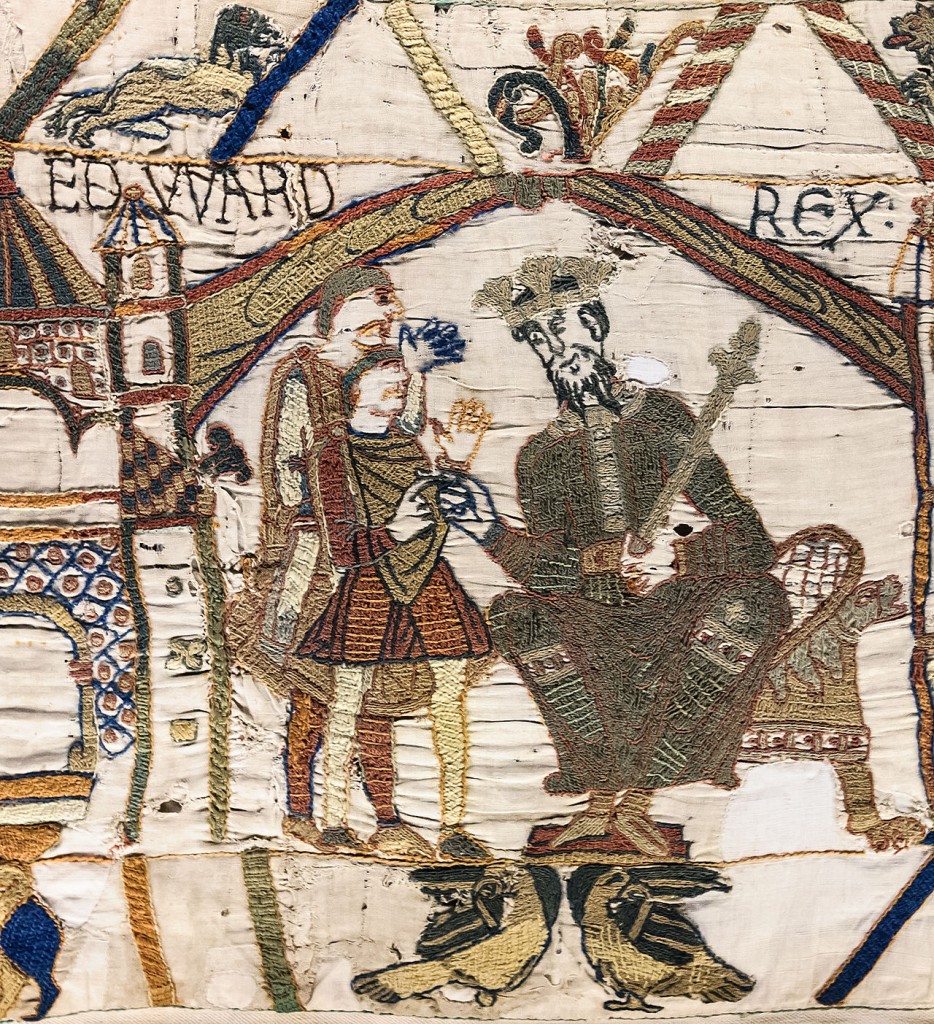 This first image is Edward the Confessor (Edward Rex: King Edward).
This first image is Edward the Confessor (Edward Rex: King Edward).
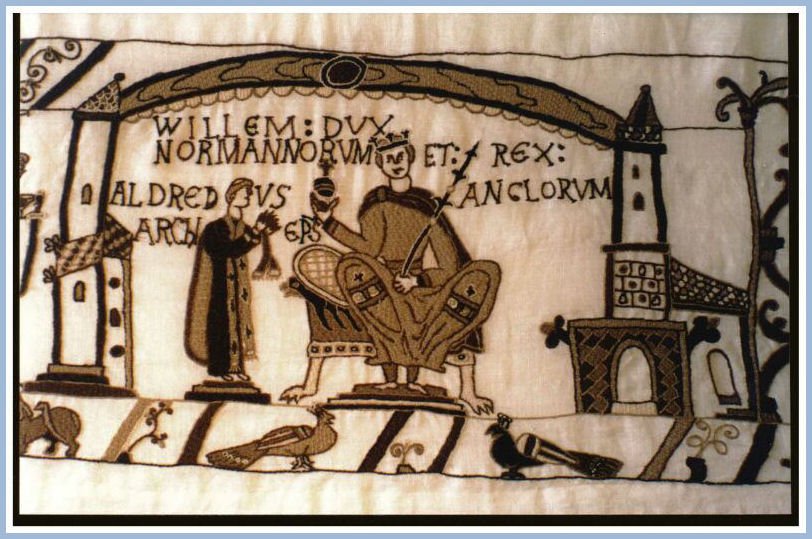 It is a little difficult to see, but it appears as though William is wearing the same crown that Edward was in the previous picture. The most significant differences is size and the inversion of color: William’s crown is dark, but this was most likely done because of his blond hair, as depicted in the tapestry.
It is a little difficult to see, but it appears as though William is wearing the same crown that Edward was in the previous picture. The most significant differences is size and the inversion of color: William’s crown is dark, but this was most likely done because of his blond hair, as depicted in the tapestry.
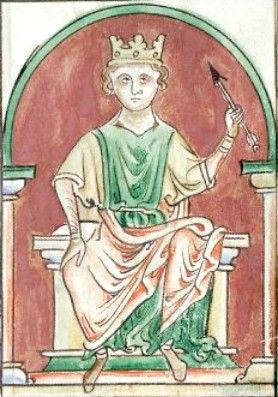
This is a drawing of William II, son and successor of William I, from a manuscript of Matthew Paris’s Historia Anglorum. Here, again, the crown looks similar.
This is a drawing of the next English king, Henry I, from the same manuscript. Once again, there is continuity in look. It is important to note, however, that Matthew Paris composed his chronicle in the mid-thirteenth-century, more than a hundred years after the reigns of William II and Henry I.
In this twelfth-century depiction of Henry II, we can see a difference from the illustrations made by Matthew Paris. Here Henry, and Queen Eleanor of Aquitaine, are both wearing crowns more similar in style, with outward flair, to those depicted in the Bayeux Tapestry.
Once again, though, we have a difference in style shown with Henry II and Eleanor’s effigies (more tombs!). While difficult to see in this picture, the crown does not have the similar flair as shown above, but appears to be more similar the style from Paris’s chronicle. There are several explanation, and given more time I might be able to research and come up with a more definitive one: several crowns were commissioned by different monarchs in the Middle Ages. Indeed, this has continued to be fairly common, even into the twentieth-century. Records of the crowns, especially those commissioned and owned independently by the monarch, are ambiguous and often do not provide more of an explanation than a chancery record that states “a crown of Henry II” in an inventory list (sometimes such mentions are also made in wardrobe records).
In the coronation image of Henry III from a late-thirteenth to early fourteenth century manuscript, the coronation crown again resembles the one worn by Edward the Confessor in the Bayeux Tapestry. An interesting twist happens here. It is rumored that King John, the father of Henry III, lost the original crown of St. Edward (presumably he did the modern equivalent of pawning it and never making good on the loan). For the first coronation of Henry in 1216, some sources indicate that a circlet of some sort was used during the ceremony. This was indeed a true departure from tradition: it was thought that every king since William I had St. Edward’s Crown placed on their head during the coronation in Westminster Abbey. However, there are claims that the crown was hidden away in Westminster abbey and was used for the coronation of Henry VIII.
This drawing, from Flores Historiarum, a manuscript compiled at St. Albans monastery during the thirteenth-century (Matthew Paris wrote one continuation of it) Edward I is shown wearing what appears to be the same crown as his father in the image above it.
This is an early fourteenth-century manuscript showing the coronation of Edward II. The crown is again similar. My treatment of St. Edward’s Crown so far as been a little extensive, but I want to provide a fair amount of illustrations to show how the crown had been depicted, especially from the reign of Henry III on because it is not until then that the coronation crown was explicitly named “St. Edward’s Crown.” I’ll go ahead and move on to some later examples, and maybe even include some of the other crown jewels!
Henry VI is shown here wearing the “coronation crown” in a fifteenth-century manuscript. The crown appears a little different, but the style continues to be similar.
Here is Edward IV with a similar looking crown for his coronation.
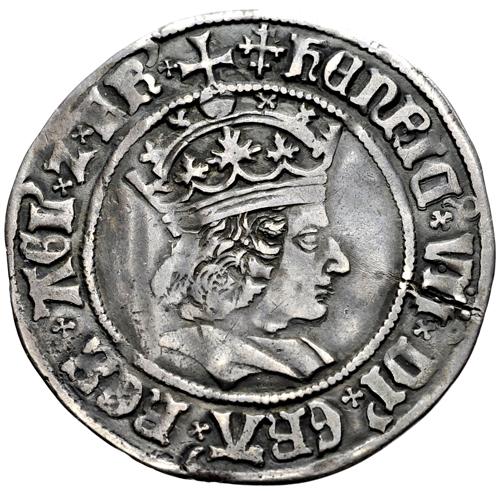 I have not been able to find a drawing or painting of Henry VII wearing a crown, let alone the coronation crown. However, I was able to find an image of a coin issued during his reign which shows Henry wearing a crown with arches. Such crowns were popular since the Middle Ages, with the crown of the Holy Roman Emperor, dating from perhaps the eleventh-century, having a single hoop or arch. By the fifteenth-century, the style of the monarch’s secondary crown, a state crown, changed to include two arches, representing the “imperial” power and authority of the English king. (More on the Imperial State Crown below, along with the confusion it causes).
I have not been able to find a drawing or painting of Henry VII wearing a crown, let alone the coronation crown. However, I was able to find an image of a coin issued during his reign which shows Henry wearing a crown with arches. Such crowns were popular since the Middle Ages, with the crown of the Holy Roman Emperor, dating from perhaps the eleventh-century, having a single hoop or arch. By the fifteenth-century, the style of the monarch’s secondary crown, a state crown, changed to include two arches, representing the “imperial” power and authority of the English king. (More on the Imperial State Crown below, along with the confusion it causes).
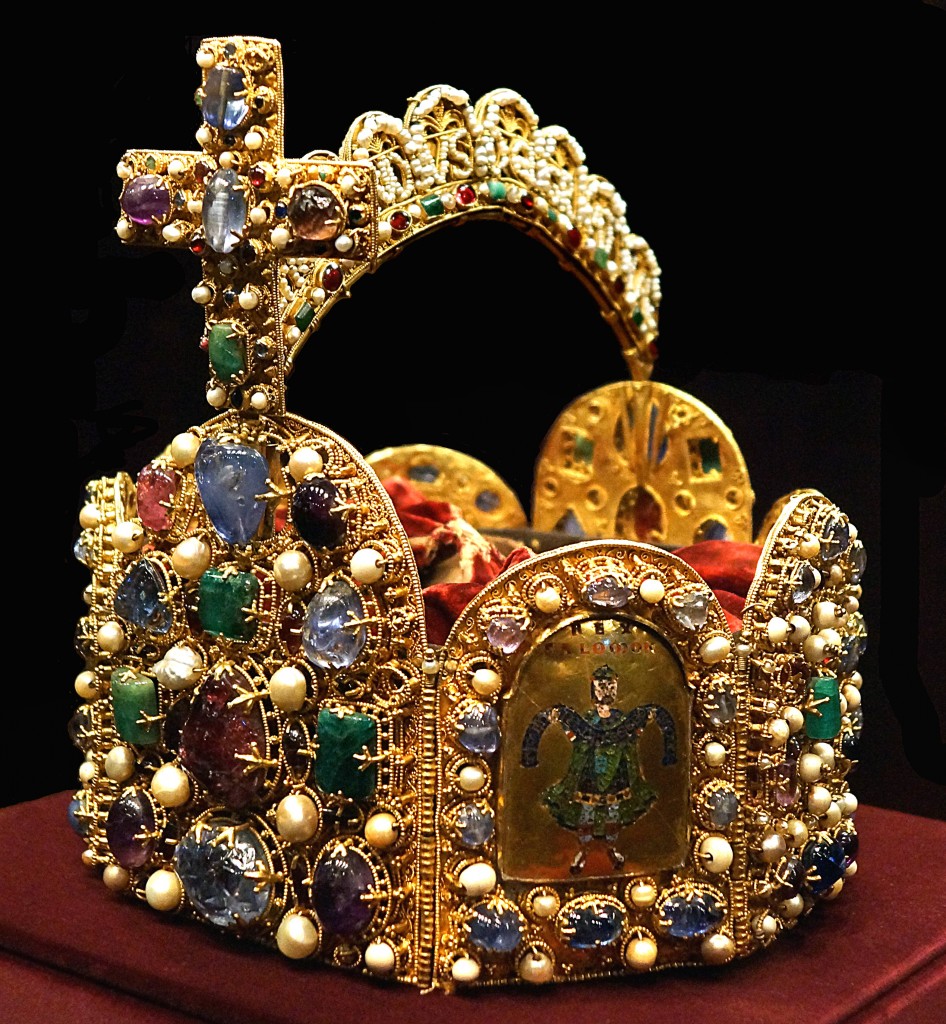 I have read that William I had a crown made that resembled the one above, but I have never been able to find a drawing of it. It could be that I have not looked hard enough. But from what I can find, it seems that the style of the crown, and even the coronation crown, changed during the Tudor period.
I have read that William I had a crown made that resembled the one above, but I have never been able to find a drawing of it. It could be that I have not looked hard enough. But from what I can find, it seems that the style of the crown, and even the coronation crown, changed during the Tudor period.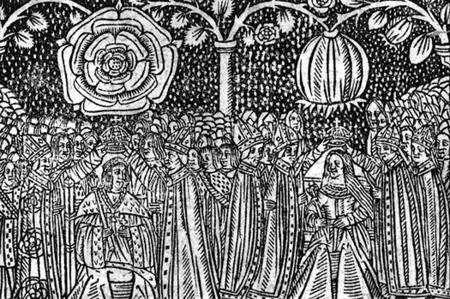 Here is an illustration of the coronation of Henry VIII and Katherine of Aragon. It is difficult to really make it out well, but the coronation crown appear to be in the same style as the one worn by Henry VII above. Indeed, there is some conjecture that the crown the last two pictures was commissioned by with Henry VII or VIII. If that is true, the crown worn by Henry VIII may very well have been the crown stripped of its jewels and melted down under Oliver Cromwell.
Here is an illustration of the coronation of Henry VIII and Katherine of Aragon. It is difficult to really make it out well, but the coronation crown appear to be in the same style as the one worn by Henry VII above. Indeed, there is some conjecture that the crown the last two pictures was commissioned by with Henry VII or VIII. If that is true, the crown worn by Henry VIII may very well have been the crown stripped of its jewels and melted down under Oliver Cromwell. 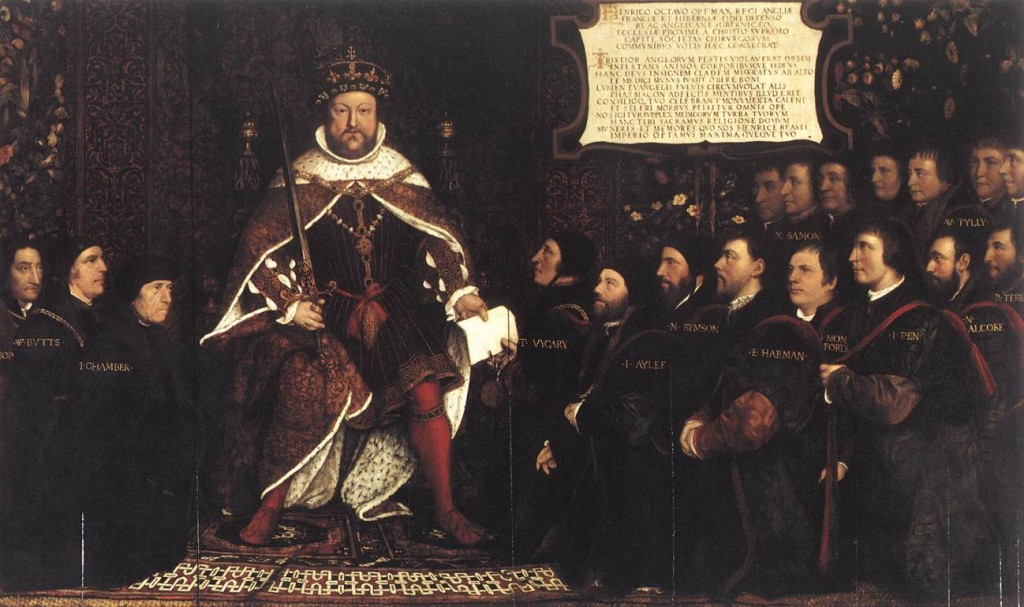 Here we have Henry VIII in all of his regal gloriousness, obviously later in life. I do not have a date or artist for the portrait. The painting is of a similar look to other portrait made during his reign or shortly after, so I will hazard the guess that it may be a fair depiction of Henry and his crown.
Here we have Henry VIII in all of his regal gloriousness, obviously later in life. I do not have a date or artist for the portrait. The painting is of a similar look to other portrait made during his reign or shortly after, so I will hazard the guess that it may be a fair depiction of Henry and his crown.
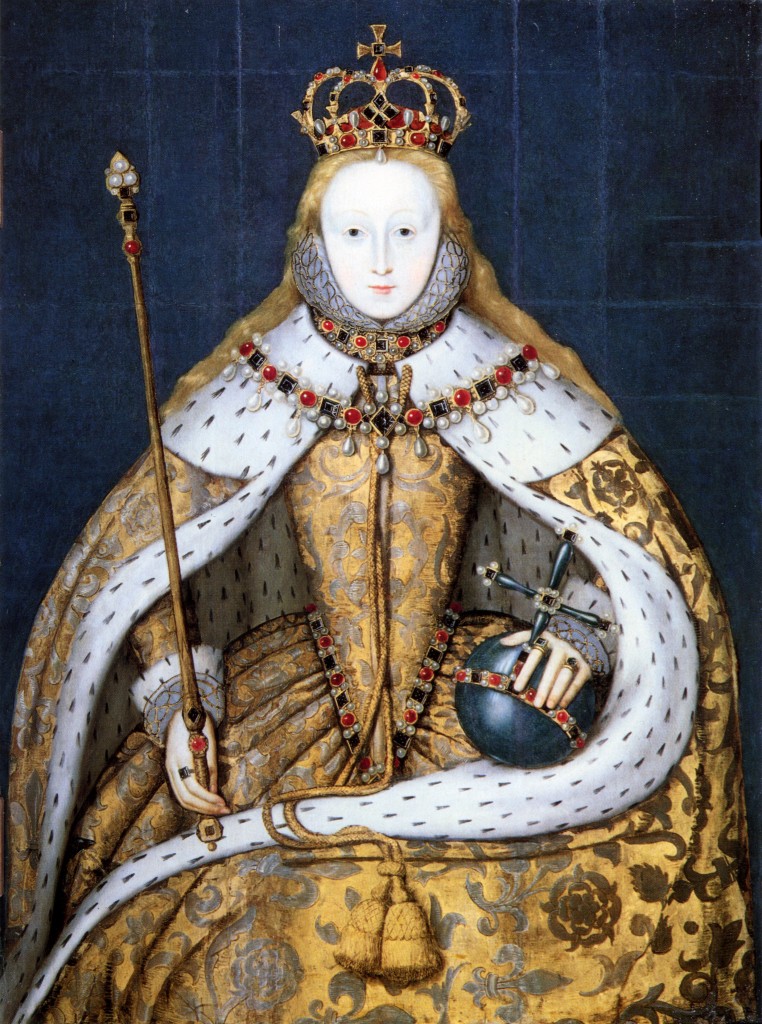 During the reign of Elizabeth I we see a couple different depicted of crowns. In the image above, the coronation crown is said to have been the crown commissioned by Henry VIII for the coronation of Anne Boyle. Anne is the only Queen Consort to be crowned with St. Edward’s Crown (or Henry VIII’s crown), but she complained of the weight, a gripe of modern monarchs with the recreation, so a light crown was made for her to wear at the events following the ceremony.
During the reign of Elizabeth I we see a couple different depicted of crowns. In the image above, the coronation crown is said to have been the crown commissioned by Henry VIII for the coronation of Anne Boyle. Anne is the only Queen Consort to be crowned with St. Edward’s Crown (or Henry VIII’s crown), but she complained of the weight, a gripe of modern monarchs with the recreation, so a light crown was made for her to wear at the events following the ceremony. 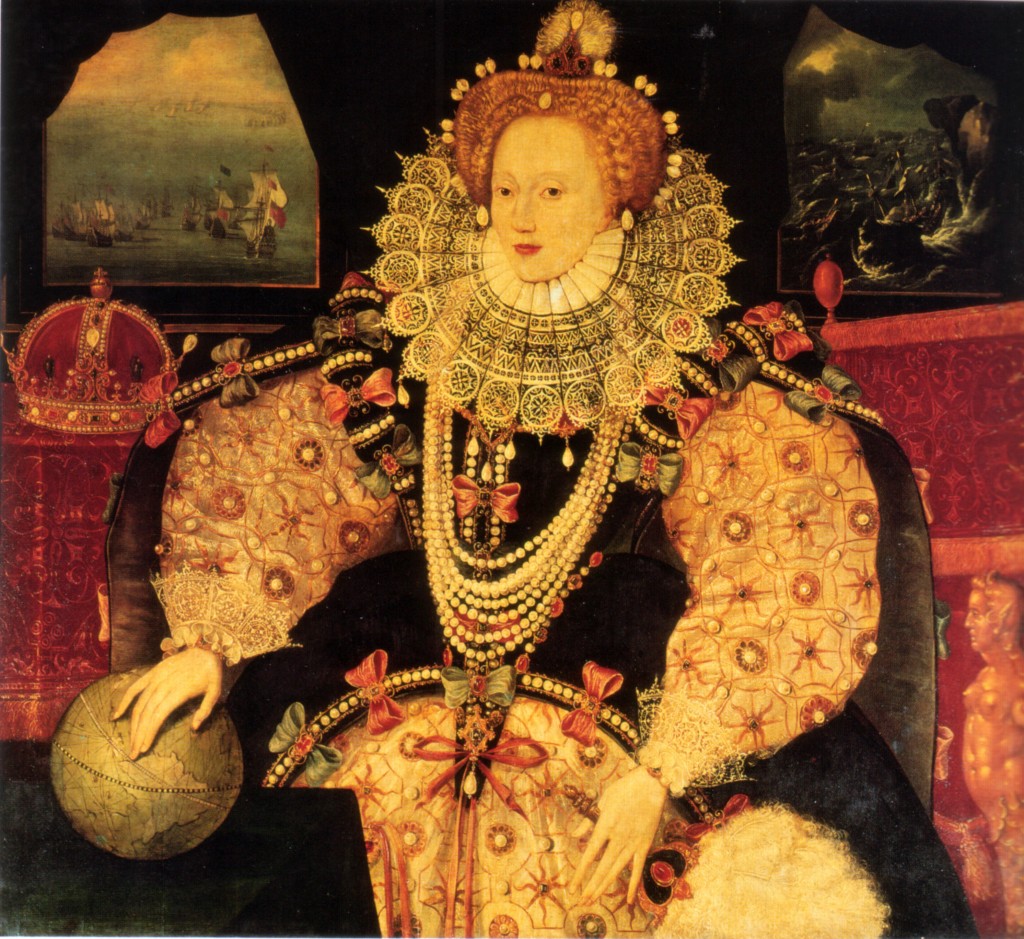 This is a portrait we are already familiar with: Elizabeth following the defeat of the Spanish Armada. Here the crown is different, perhaps Henry’s or St. Edward’s Crown. To me, it looks quite a bit different from the crown shown in the portrait of late-life Henry. Again, though, the crown very well may have been modified for Elizabeth.
This is a portrait we are already familiar with: Elizabeth following the defeat of the Spanish Armada. Here the crown is different, perhaps Henry’s or St. Edward’s Crown. To me, it looks quite a bit different from the crown shown in the portrait of late-life Henry. Again, though, the crown very well may have been modified for Elizabeth.
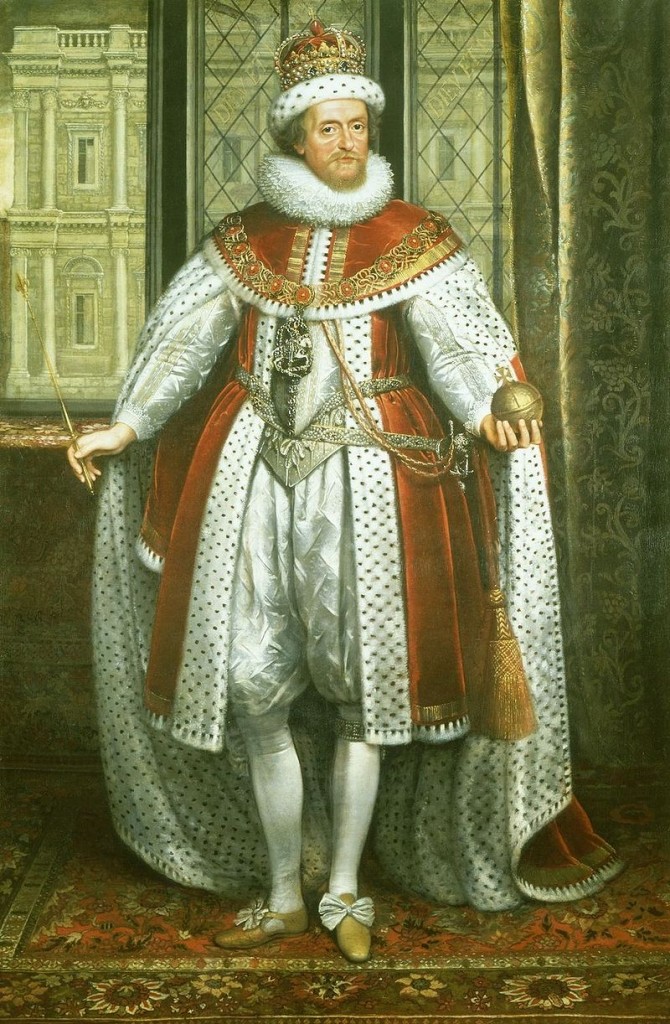 James I is shown above, wearing a crown that looks very similar to the one in the second portrait of Elizabeth I. Again, the crown may have been very heavily modified for James.
James I is shown above, wearing a crown that looks very similar to the one in the second portrait of Elizabeth I. Again, the crown may have been very heavily modified for James. 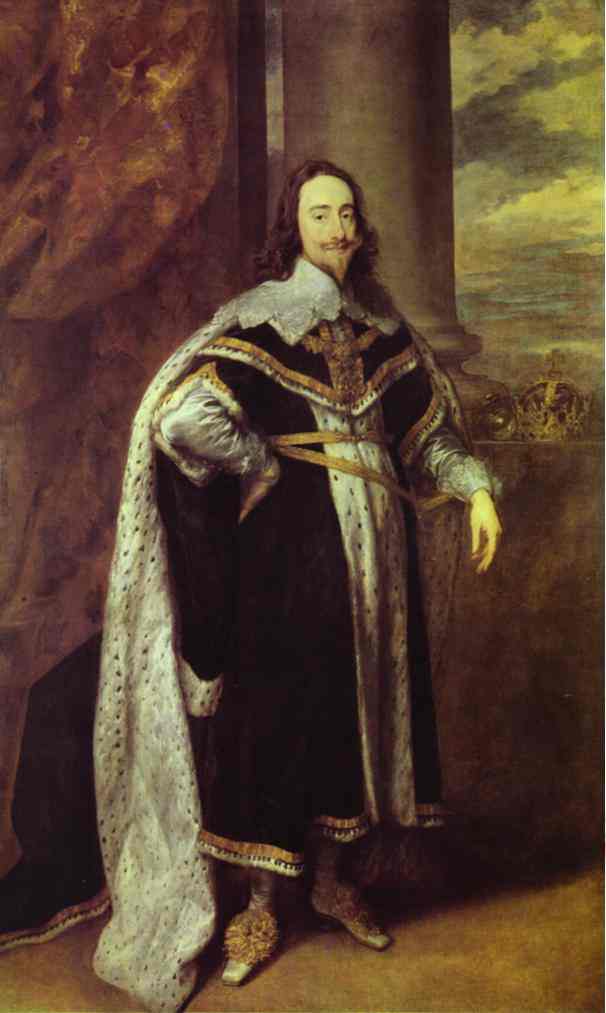 Here is another familiar portrait, the one I showed in class on Tuesday. We can see, rather faintly, the crown in the background, again looking similar to the crown shown in the portraits of Elizabeth and James.
Here is another familiar portrait, the one I showed in class on Tuesday. We can see, rather faintly, the crown in the background, again looking similar to the crown shown in the portraits of Elizabeth and James.
St. Edward’s Crown was stripped of its jewels and melted down during the English Republic under Oliver Cromwell. Likewise, all of the jewels made of precious metals, aside from the gold Anointing Spoon, were melted down and/or sold. Three steel swords (the swords of Temporal Justice, of Spiritual Justice, and of Mercy) also survived.
Above is the Anointing Spoon and the Ampulia, which contains the holy oil used to anoint kings and queens of England (they are both still in use). The spoon dates to the thirteenth-century, making it the oldest surviving piece of royal regalia.
Here is another image of the Anointing Spoon.
Above is the Sword of Temporal Justice, dated to c. 1600. There is debate as to whether it was added in the reign of James I or Charles I. Such a sword has been used in the coronation ceremony from the reign of Richard I to the present day. It is also carried before the monarch by the Earl Marshal at the opening of Parliament.
Upon the restoration of the monarchy in 1660, St. Edward’s Crown was recreated for the coronation of Charles II. It is said that some of the gold from the original crown was added to the gold cast for the recreation. The modifications of the coronation crown are much easier to track after the restoration, and there does not appear to be any doubt that the same base (or perhaps gold) has been used for the reforming or modifications of St. Edward’s Crown.
Above is the St. Edward’s Crown. As you can see, it has been pretty significantly changed over the last four centuries. The cap has been changed a number of times (it is now purple, instead of red).
Here is another picture, so you can get a little more of a sense of the details. It is rather stunning.
Many other pieces of regalia were recreated for the coronation of Charles II. One such piece is the Sovereign’s Orb.
Another object is one of two scepters, the first of which is with a cross.The scepter has seen many alterations, but the most notable was done in the early twentieth century when the Star of Africa (large diamond) was inserted.
The second is mounted with a dove. The first represents the sovereigns temporal rule, and the second his/her spiritual rule.
Above is perhaps the most iconic piece in the Crown Jewels collection, the Imperial State Crown. St. Edward’s Crown was and still is used only for coronations. Once again, we now hit another point of confusion. A “State Crown,” for lack of a better term, was used by monarchs throughout the Middle Ages, with many references to the “everyday” crown also named St. Edward’s Crown. Indeed, the crown used for coronations was regarded as a holy relic, so it stayed in the sanctuary in Westminster Abbey, where the rest of the crown jewels were also kept. In the early fourteenth-century after a few instances of theft, the crown jewels were moved to the Tower of London. This has caused a bit of difficulty in determining what actually might have happened to the original crown: did John lose it in the thirteenth-century or was it lost sometime after the fourteenth? Deans of Westminster Abbey have claimed that the original crown, along with some pieces of the regalia, were held in the Treasury of Westminster, but no records have ever been shown to prove them. The sapphire on the circlet portion of the crown is said to have belonged to Edward the Confessor, an additional connection to the revered Anglo-Saxon saint-king.
We have a problem then. The crown shown in the picture above, and the others from the Tudor era forward, may very well be the Tudor Imperial State Crown, not St. Edward’s. If St. Edward’s Crown was indeed only used for coronations, and not for portraits, we may not have any illustrations at all depicting the original coronation crown. Monarchs, past and present, have complained about the weight of St. Edward’s Crown, and prefer to wear it for the shortest time possible following their coronation. So, the current St. Edward’s Crown may be modeled off of the original, but we have absolutely no way of actually knowing. The only descriptions of the crowns appearance was that it was gold with precious jewels. Not much to paint a picture from.
This is an illustration of the Imperial State Crown used by Queen Victoria and her son King Edward VII.
This is the version worn by King George V, the father of the current queen. The large diamond at the base is the Second Star of Africa. The large ruby looking stone is actually a spinel. It is known as the Black Prince’s Ruby, said to have been given by Edward the Black Prince of Wales in 1367 by the king of Castile for the prince’s valor in battle.
Here again is the current Imperial State Crown worn by Elizabeth II. As you can see, the arches have been lowered, the thought being that it would be more flattering for the queen and look more feminine.
I will go ahead and end here. There is so much more I would like to include, but I am already over 2300 words! I hope you all have enjoyed the post and my confusing history of the Crown Jewels. If there is interest, I will put together another post on other pieces of the collection. There are several more crowns and other extraordinary pieces.


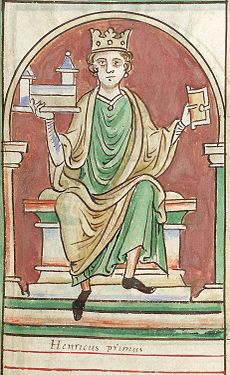
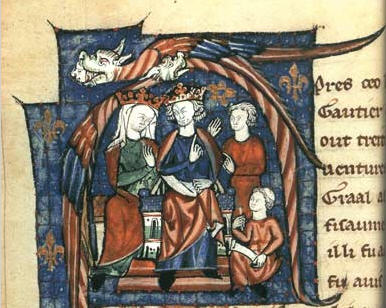
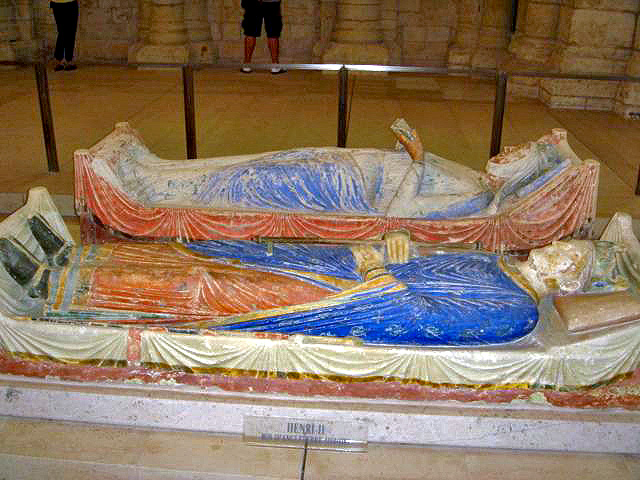
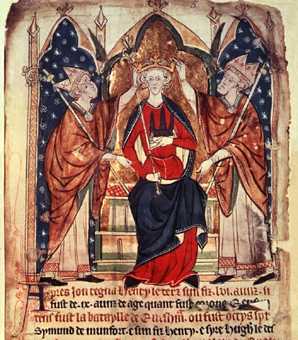
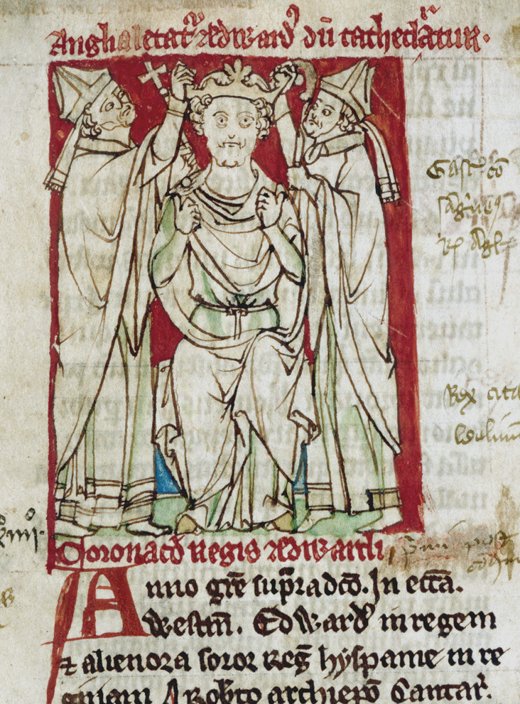
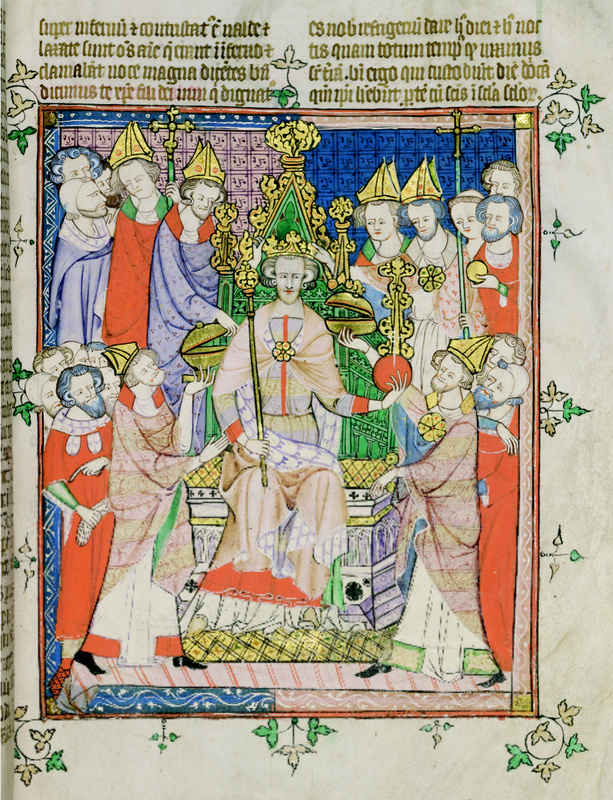
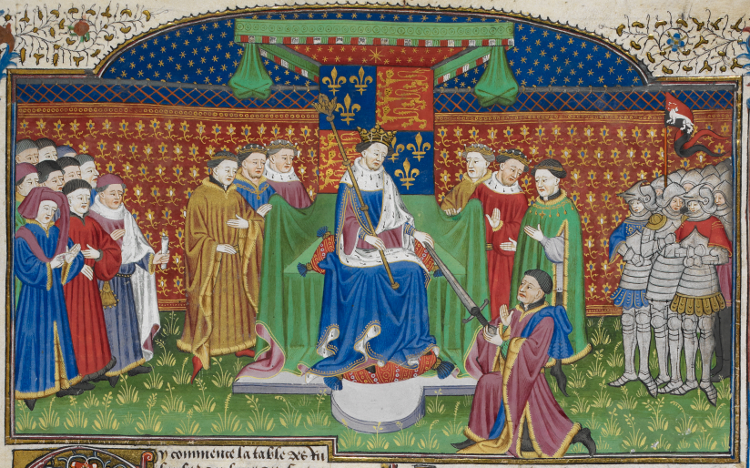
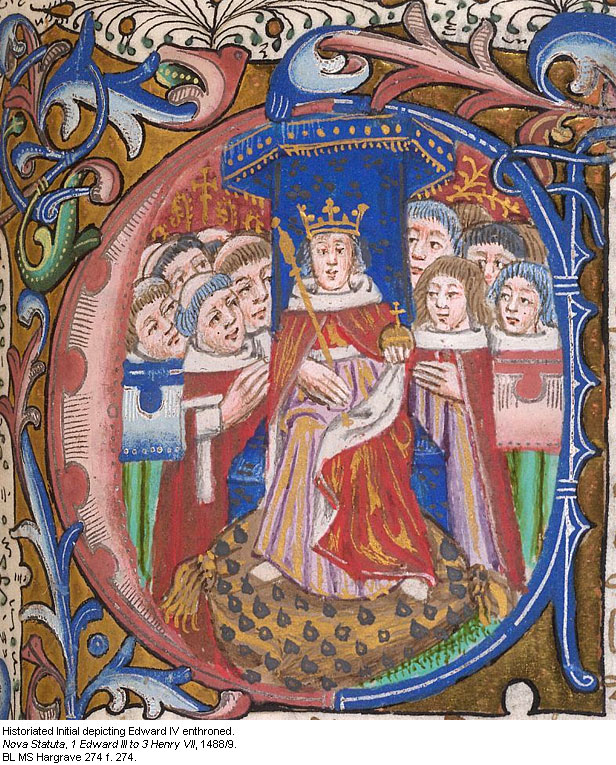
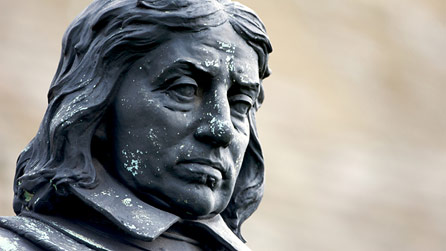
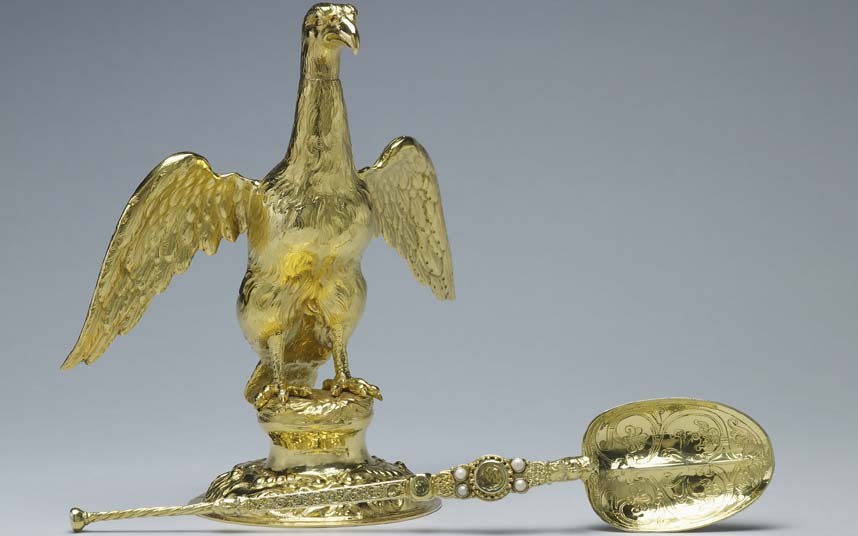


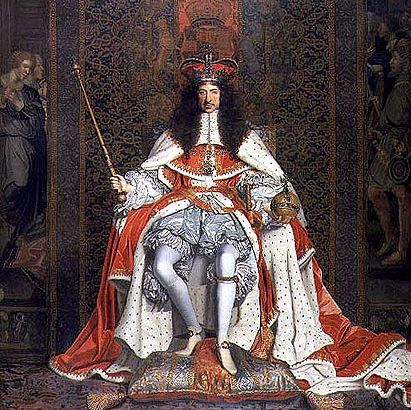
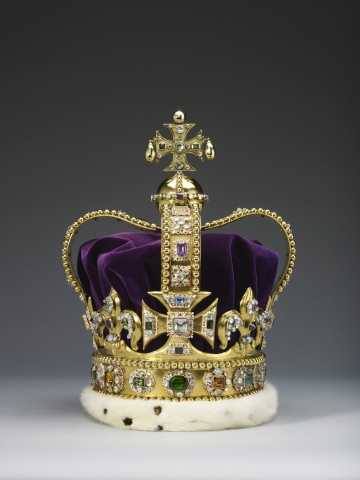
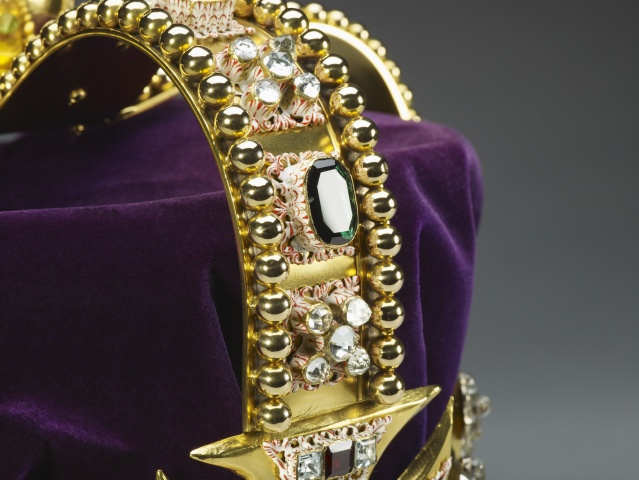
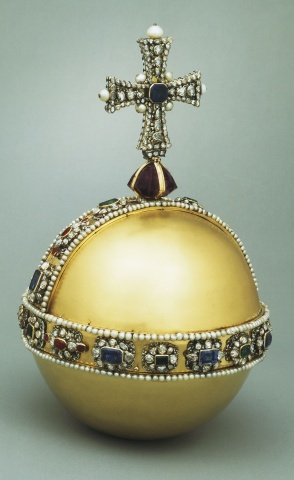
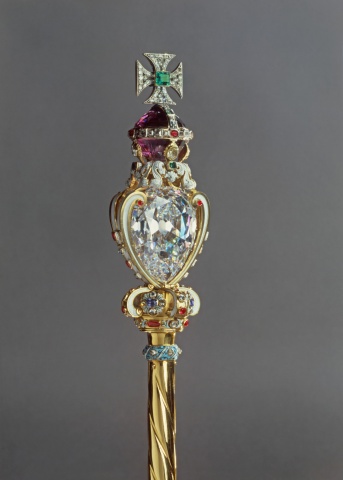
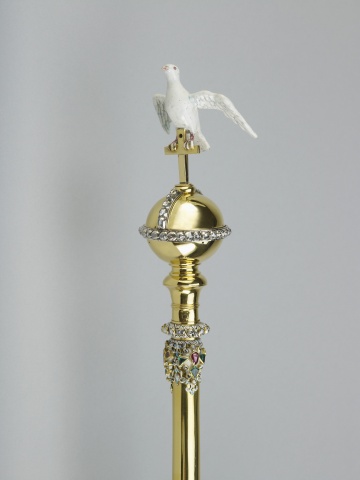
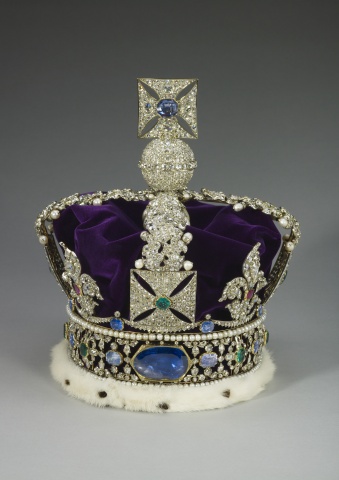
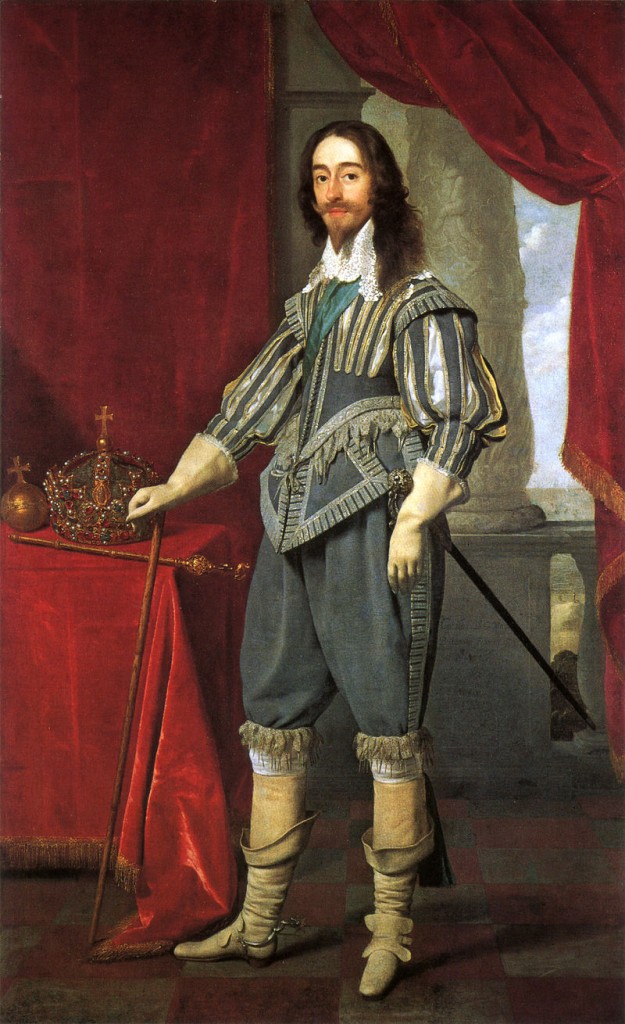
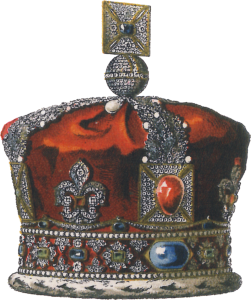
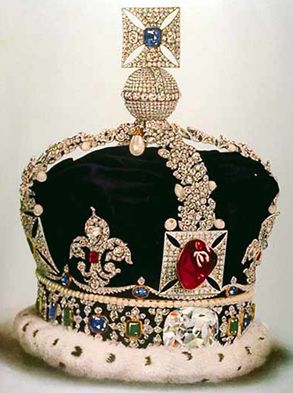
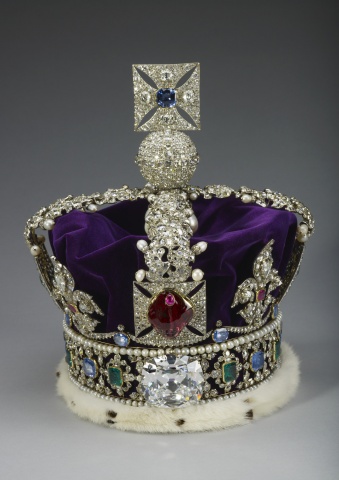
This is amazing Chris! I absolutely loved reading about the lineage of the crown jewels. It’s just as complicated as the royal throne! I was able to go to the Tower of London when I was studying abroad, and I think that you did a better job of looking into the crown jewels than the exhibition did. I never knew that each crown was modified with each passing monarch, and I also never knew that the crown was melted down during the Commonwealth. I mean it makes sense that they would want to melt it down. I wonder where those jewels are now. Although they were sold, maybe someone on this planet has the royal crown’s jewels and doesn’t even know it! Anyways, I also wanted to discuss the Royal Anointing Spoon and Ampulia. Why would they not melt that down and sell it? Why was this piece so culturally important from the others? Also, I know you said that this was the oldest oldest surviving piece of royal regalia, but is King Edward’s chair older than that? Just wondering. I think it would be so interesting if you did something about that artifact. Anyways, I just wanted to say thank you for this awesome post. I learned a lot. My last question is, how much are all these crowns worth? Anywhere close to the amount in a student’s bank account? I’m asking for a friend. Haha.
Chris, I found this post really interesting! It combined two of my favorite things: fashion (in the form of jewelry) and British history. The pictures are so impressive! I also commend you because it must have taken quite a while to collect all these images and write up this post, but I definitely feel it was worth your hard work. I find the fashion of the British monarchy fascinating as well. I feel like there would be a great story behind what influenced their style and the production of their clothing. Just looking at these portraits makes me also wonder who was responsible for sewing these pieces and what their process was in doing so. It surely took great time and effort to amass the materials necessary and then actually create it.
If you have any resources concerning the Crown Jewels or fashion in general within the British monarchy, please let me know. Great job again with this post!